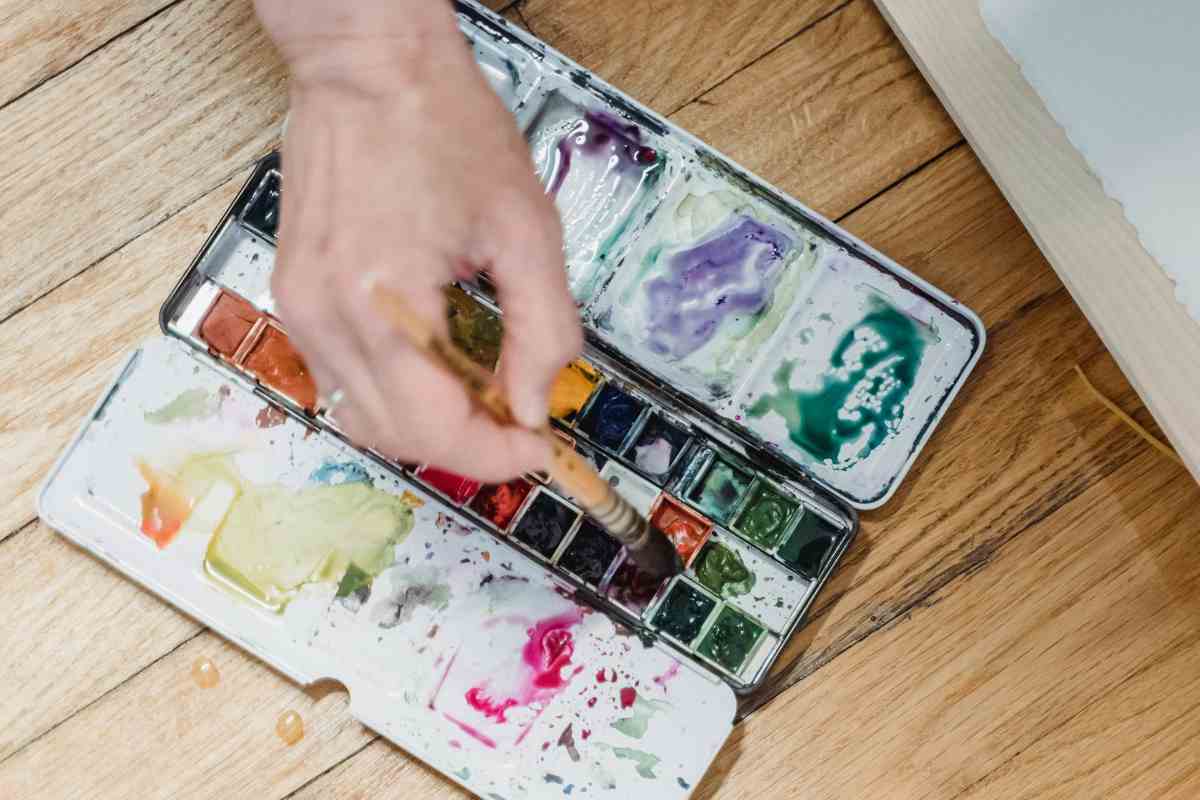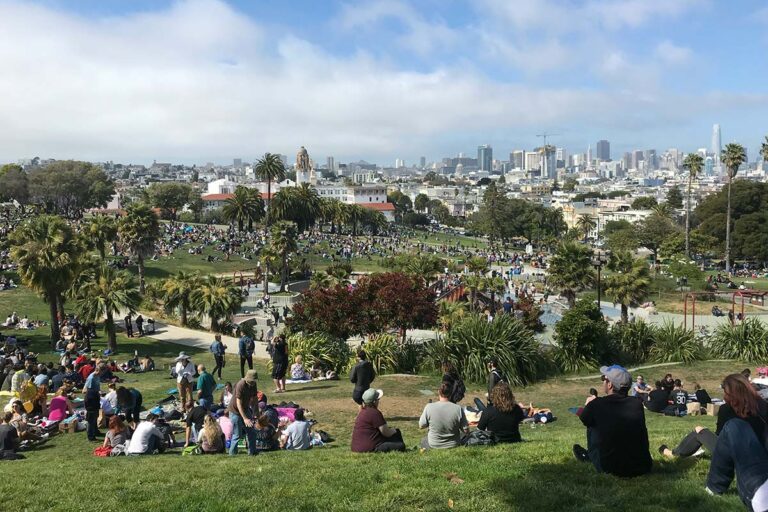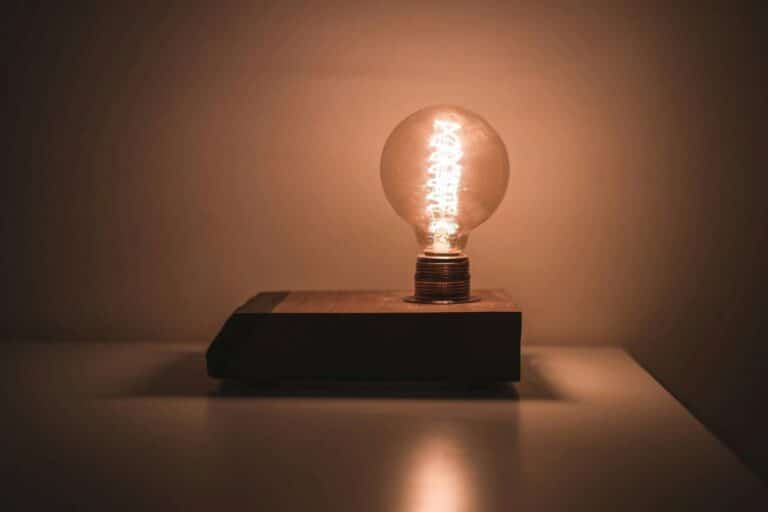Creativity can open doors to fresh ideas, meaningful work, and deep fulfilment. Yet the same spark can also leave you feeling raw, sensitive, or uncertain. Many people notice their most original ideas appear alongside moments of self-doubt or shifts in mood.
It makes sense, creativity asks you to take risks, experiment, and bring vulnerable parts of yourself into the world. That process can be exciting and liberating, but also overwhelming at times.
As a therapist who specialises in supporting high-achieving individuals, I’ll share why creativity and emotional well-being are so closely linked. I’ll also explore how to navigate the challenges that come with a creative mind and how to nurture both your ideas and your inner balance.
What’s the Connection Between Creativity and Mental Health?
Creativity is more than making, it activates brain regions tied to reward and emotion, sparking both joy and sensitivity. It can help process intense feelings but also intensify anxiety, depression, or perfectionism.
Immersing in art, writing, or performance often lifts mood through dopamine and endorphins. Flow states can quiet racing thoughts, sharpen focus, and often bring a sense of calm. Over time, these moments build resilience, confidence, and identity.
Yet the same traits that fuel creativity—sensitivity, introspection, authenticity—can heighten vulnerability. Constant self-evaluation may trigger rumination, doubt, and fears of falling short. Emotional intensity can inspire art, but also deepen stress or depression.
What’s the Real Story Behind the “Mad Genius” Trope?
The cultural idea of the “mad genius” suggests creativity is inseparable from mental illness. But research tells a more balanced story. A 2015 study in Nature Neuroscience did find some genetic overlap between creative traits and certain psychiatric conditions (Power et al., 2015).
However, the majority of creative individuals do not experience severe mental health challenges. In fact, many use their heightened sensitivity and emotional awareness as assets that support innovation, resilience, and personal growth.
Statistical reviews show that mood disorders may appear at slightly higher rates in artistic communities. Still, these experiences are far from universal. Most creatives are able to channel their depth of feeling into productive and meaningful work without it becoming debilitating.
Understanding this nuance is important. Struggles with anxiety or depression may intersect with creativity, but they are neither prerequisites for success nor guarantees of it. Dispelling the “mad genius” myth allows us to appreciate creativity for what it truly is. It’s a complex human strength that flourishes best when paired with emotional well-being.
What Are the Mental Health Advantages of Art Therapy and Creative Pursuits?
Creative expression helps people process emotions that are hard to put into words. Painting, writing, music, or movement can turn abstract feelings into tangible forms, offering perspective and release.
Beyond emotional regulation, creative engagement also strengthens resilience, builds self-awareness, and fosters self-compassion. Below is a simple comparison of different creative activities and their mental health benefits:
| Creative Activity | Key Benefit | How It Works |
| Painting | Eases Stress | Induces a flow state, helping to lower cortisol levels |
| Writing | Manages Emotions | Translates feelings into a structured narrative |
| Music | Lifts Mood | Stimulates dopamine pathways in the brain |
| Dance | Releases Tension | Engages body awareness and promotes endorphin release |
Externalizing emotions through art not only enhances self-awareness but also complements talk therapy, creating a more complete foundation for growth and healing.
Improved Emotional Expression
Art therapy creates a safe, nonverbal pathway for complex emotions. Many people find it easier to paint their anger, sculpt their grief, or write their confusion. Putting feelings into art can feel more natural than saying them out loud.
This process provides relief while also making it possible to share what feels overwhelming in a more manageable form. For some, symbolic imagery reveals aspects of the inner world that might remain hidden in ordinary conversation. This opens space for deeper therapeutic exploration.
Deeper Self-Discovery
Creative work often uncovers hidden beliefs, patterns, and memories. A single drawing or piece of writing can reflect themes of control, vulnerability, or longing that you may not have consciously recognised.
Engaging with these symbols fosters insight into how past experiences shape current struggles. This kind of discovery deepens self-understanding and can guide the therapy process. It helps you connect the dots between inner experiences and daily challenges.
Reduced Anxiety
The mindful quality of creative activity, whether it is mixing colors on a canvas or focusing on rhythm in music, helps quiet the nervous system. Immersion in these practices shifts attention away from the amygdala’s threat response. It lowers heart rate and blood pressure and releases endorphins that naturally counteract stress.
Greater Resilience Through Experimentation
The creative process teaches adaptability, encouraging you to embrace imperfection and learn from experimentation. Whether you try a new technique, adjust to a mistake in a drawing, or improvise in music, each mirrors the process of navigating life’s uncertainties. This openness strengthens resilience, allowing you to face setbacks with curiosity rather than avoidance.
Over time, this flexibility and willingness to express your authentic self extend beyond the creative space. They empower you to approach emotional challenges with greater confidence.
How Do Anxiety and Depression Impact Your Creative Expression?
Anxiety and depression shape creativity in different ways, sometimes blocking it, sometimes deepening it. Left unaddressed, they sap motivation, distort focus, and disrupt creative rhythm. With the right support, these struggles can be transformed into authentic expression.
Anxiety often fuels perfectionism and self-criticism. Racing thoughts crowd mental space, stall projects, and erode confidence. Learning to break these cycles helps restore flow.
Depression lowers energy, dulls focus, and creates disconnection from work. In bipolar disorder, hypomanic phases may spark ideas but often end in impulsivity and burnout. Sustainable creativity depends not on these swings but on stability.
What Practical Creative Coping Strategies Can Support Your Mental Health?
Creative practices can serve as powerful outlets for stress, uncertainty, and difficult emotions. By turning feelings into something tangible, you gain perspective while also calming your mind and body. Over time, these practices create a personal toolkit that supports emotional well-being and lays the groundwork for deeper growth.
Journaling
Daily journaling provides a structured outlet for clarifying thoughts, tracking mood shifts, and setting intentions. Putting words on the page validates your emotional reality and strengthens neural pathways linked to self-reflection and awareness. Over time, journaling fosters narrative coherence, helping you recognize patterns and make sense of complex experiences.
Painting or Sketching
Art offers a nonverbal way to release emotions that are difficult to express directly. Painting or sketching inner experiences transforms feelings into imagery, which can bring both relief and insight. Visual art also activates sensory pathways that support emotional regulation, making it a restorative practice for building resilience.

Music
Music can shift emotional states with remarkable precision. Listening to or composing pieces that mirror your current mood, then gradually moving toward a different tone, creates a gentle emotional transition. This process stimulates dopamine pathways, which lift mood and ease stress. Music becomes a bridge between inner experience and external expression.
Dance and Movement
Movement helps release physical tension and reconnects you with the body. Dancing freely or simply moving to rhythm encourages endorphin release, lowers cortisol, and restores a sense of grounding. When stress or anxiety feels stuck, movement offers a safe and effective way to release it.
Art Therapy
For those seeking more guided support, art therapy combines creative exploration with professional insight. Working with a trained therapist provides opportunities to uncover unconscious patterns, address emotional blocks, and connect imagery with personal meaning.
This approach integrates the freedom of creativity with therapeutic guidance, creating a structured yet personal path toward healing. The data shows that engaging in art-making can significantly reduce cortisol levels, the body’s primary stress hormone. This highlights its effectiveness as a therapeutic tool (Kaimal, Ray, & Muniz, 2016).
What Does Neuroscience Reveal About Creativity and Mental Health?
Neuroscience research offers valuable insight into how creativity and mental health are connected at the level of brain function and genetics. Science maps the systems that drive idea generation and emotional regulation. This helps explain why creativity can feel both exhilarating and emotionally taxing.
This knowledge also informs more precise approaches to therapy, ensuring that creativity is nurtured without compromising well-being.
The Brain Mechanisms Behind Creative Flow
Creative flow arises when several brain regions work in concert. Different parts of the brain work together to support idea generation, flexibility, and the sense of reward that accompanies creative work.
| Brain Region | Function | Supporting Evidence |
| Prefrontal Cortex | Idea Generation | fMRI studies indicate reduced self-critique during creative tasks |
| Anterior Cingulate | Cognitive Flexibility | Linked to divergent thinking in EEG research |
| Basal Ganglia | Motor and Reward Integration | Associated with sustained immersion and engagement in tasks |
Understanding these networks allows for interventions that support creativity while minimizing risks of overload. A range of approaches, from breath-based practices to guided imagery, are used across the field to support flow.
Genetic Links Between Creativity and Mental Health
Genetic research has revealed overlaps in the pathways that shape creativity and emotional sensitivity. Variations in dopamine and serotonin systems influence both imaginative capacity and vulnerability to mood disorders.
A 2015 study in Nature Neuroscience identified shared genetic markers connecting divergent thinking with psychiatric conditions (Power et al., 2015). Importantly, these genetic factors do not determine destiny. Their expression is shaped by environment, lifestyle, and the quality of social and therapeutic support.
How Can You Overcome Creative Blocks and Self-Doubt?
Creative blocks often arise from criticism, fear of judgment, or exhaustion. Perfectionism, rumination, and tying worth to output can stall progress. These are not failures but signals that emotional needs require care.
Therapeutic strategies help. Reframing turns self-criticism into feedback. Exposure tasks build tolerance for imperfection. Prompts or constraints spark new ideas and restore confidence.
Support matters too. Shared experiences remind you creativity grows in community. With the right strategies and support, self-doubt shifts into growth, strengthening both well-being and artistic expression.
Where Can Creative Professionals Find Specialized Therapy in San Francisco?
For San Francisco’s creative professionals, therapy that connects artistry and mental health can be a valuable resource for many creative professionals. SF Therapy Group offers individual therapy for artists, writers, designers, and performers who want to strengthen both their emotional well-being and their creative identity.
Therapy is tailored, one-on-one, and rooted in Control Mastery Theory (CMT), a collaborative, evidence-based approach that emphasises emotional safety, insight, and problem-solving. Sessions provide a private space to work through challenges such as anxiety, depression, or creative blocks, with an emphasis on helping clients better understand themselves and move toward their goals. While creativity may be part of what you bring into therapy, the focus is on supporting your overall balance, resilience, and capacity to thrive.
Starting is simple. A consultation lets you share your background and goals. Together, you and your therapist design a plan that blends talk therapy with creative tools, helping you harness imagination while building balance and resilience.
Final Thoughts
Nurturing your creative spirit while maintaining emotional balance is a journey of self-discovery and resilience. By understanding the intricate link between your inner world and your creative output, you can harness challenges as opportunities for growth, transforming potential struggles into sources of profound insight and fulfilment.
Frequently Asked Questions
What is the link between creativity and mental health?
Creativity engages brain regions tied to reward and emotion, fostering both exhilaration and sensitivity. This can be a powerful outlet for processing feelings but may also amplify challenges like anxiety or perfectionism, requiring a balanced approach to support both aspects.
Is the “mad genius” trope accurate?
While some studies show genetic links between creative traits and certain mental health conditions, the “mad genius” trope is largely a myth. Most creatives do not experience severe mental health issues and often use their sensitivity as a strength for innovation and personal growth.
How do anxiety and depression affect creative expression?
Anxiety can fuel self-criticism and perfectionism, hindering creative flow. Depression may reduce energy and focus, impacting output. However, with proper support, these challenges can be channeled into meaningful exploration and authentic artistic expression.
What are effective creative coping strategies?
Journaling, painting, music, and dance are effective creative coping strategies. They offer tangible outlets for emotions, promote self-reflection, regulate mood, release tension, and foster mindfulness, building a personal toolkit for emotional well-being and resilience.
References
- Power, R. A., Steinberg, S., & Stefánsson, K. (2015). Polygenic risk scores for schizophrenia and bipolar disorder predict creativity. Nature Neuroscience, 18(7), 953–955.
- Kaimal, G., Ray, K., & Muniz, J. (2016). Reduction of cortisol levels and participants’ responses following art making. Art Therapy: Journal of the American Art Therapy Association, 33(2), 74–80.




